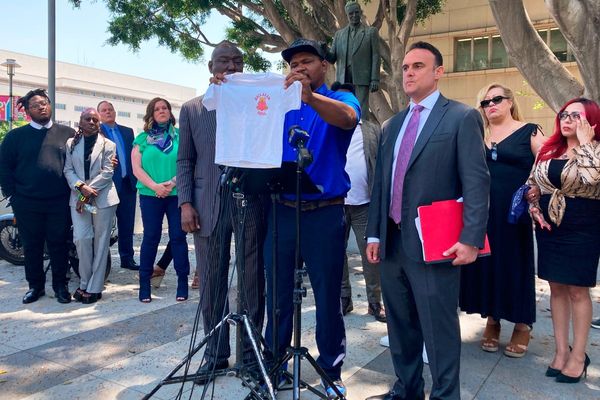
Fires, flooding and humidity may have made life hard for many Australians in the last week but it looks like there may be a reprieve as the monsoon system causing havoc across the continent is expected to break apart before the weekend.
A monsoonal weather system swept across the continent dragging with it tropical moisture from the equator that caused massive rainfalls from the far north-west of the country, right into central Australia.
An extra 100mm of rain was dumped across some parts of remote South Australia, hampering efforts to restore road and rail lines that had been cut after floods caused by ex-tropical cyclone Tiffany.
The situation meant desert communities across Western Australia, SA and the Northern Territory have remained cut off for the last week.
Desert communities without food. Alice and Darwin running short. Food bank almost out of supplies. Half of all NT prisoners now with COVID. Is something re: govt supply airlifts happening for the NT or nah?
— Celeste Liddle (@Utopiana) February 1, 2022
The Royal Australian Air Force began airlifting supplies into Coober Pedy on Monday, while store shelves in other regional centres such as Alice Springs remained bare after the town found itself unreachable by land with a growing Covid outbreak.
Though usually a rare event, the rain has caused the Todd River in Alice Springs to flow for the second time in three months. The last time it flowed was 10 November when 100mm of rain fell in 24 hours.

Out west, the Kimberley has gone from record making 50.7C temperatures in mid-January to widespread flooding across the region.
Areas around Perth and Geraldton may be sweating through temperatures nearing 40C and bracing for bushfires, but Broome recorded more rainfall in the 48 hours from Sunday morning than it did for all 2021, with 564mm of rain.
The most extreme conditions were at Country Downs, a cattle station just north of Broome, which recorded 652mm of rain in just 24 hours – more than Melbourne’s annual rainfall – the second highest daily rainfall on record in WA.
Jonathan How from the Bureau of Meteorology said the situation across central Australia should improve from Thursday, though the flood waters were likely to persist before draining into inland salt lakes.
“Thankfully the rain is easing off on Thursday,” How said. “We are seeing some cooler air coming through. It’s basically cooler air coming up from the Southern Ocean, moving up towards the monsoon, causing it to break apart and move away.”
There is also some good news on the way for Queensland, which has sweltered through a one-two-punch of hot weather and high humidity with some areas battered by severe storms overnight.
Warm water in the Coral Sea saw hot, steamy air blow across the Queensland coast these past few days, causing temperatures to feel 5C to 10C hotter than they were.
Though the maximum temperature across Brisbane on Tuesday was 34C, the humidity meant it felt closer to 38C. At 9am on Wednesday the temperature was already sitting at 32C, but would have felt more like 37C.
This humidity also fuelled thunderstorms across the state, with south-east Queensland lashed by a storm that brought down powerlines in Logan, stripped roofs from buildings and recorded more than 100,000 lightning strikes.
A suspected tornado was reported over Browns Plains, causing damage to homes but the Bureau had yet to make the sighting official.
“For us to call it a tornado it needs to touch the ground. At this stage we’re calling it a suspected tornado, so we need to confirm that,” How said.
The storm also left at least 23,000 people without power, a situation which Nationals MP Matt Canavan quickly blamed on renewable energy saying “green energy can’t keep the lights on”.
However, power company Energex said the outages were caused by a vehicle hitting a power pole during the storm and underground cable faults, and had nothing to do with renewables.
We're repairing damage which has cut power to more than 21k customers across SEQ, mostly due to storms as well as a vehicle hitting a pole, underground cable faults, & branches in lines. Watch out for fallen lines, stay clear & report ASAP to 13 19 62. #takecarestaylineaware pic.twitter.com/jBT4c8HDQx
— Energex (@Energex) February 1, 2022
The energy market regulator AEMO was forced to intervene with its reverse trading mechanism, saying in a statement it would “closely monitor reserve levels to maintain adequate supply as the evening peak-demand period approaches”.
Though the Bureau of Meteorology has issued warnings for flash flooding ahead of heavy rain overnight, it is expected this will help clear out the humidity and lower temperatures across Queensland going into the weekend.
While these heavy rains may reach areas of northern New South Wales, conditions are not expected to be as severe over Sydney. While down in Melbourne, cooler air means the humidity will have broken as the city heats up over the weekend with an expectation of hitting the low 30s early next week.







